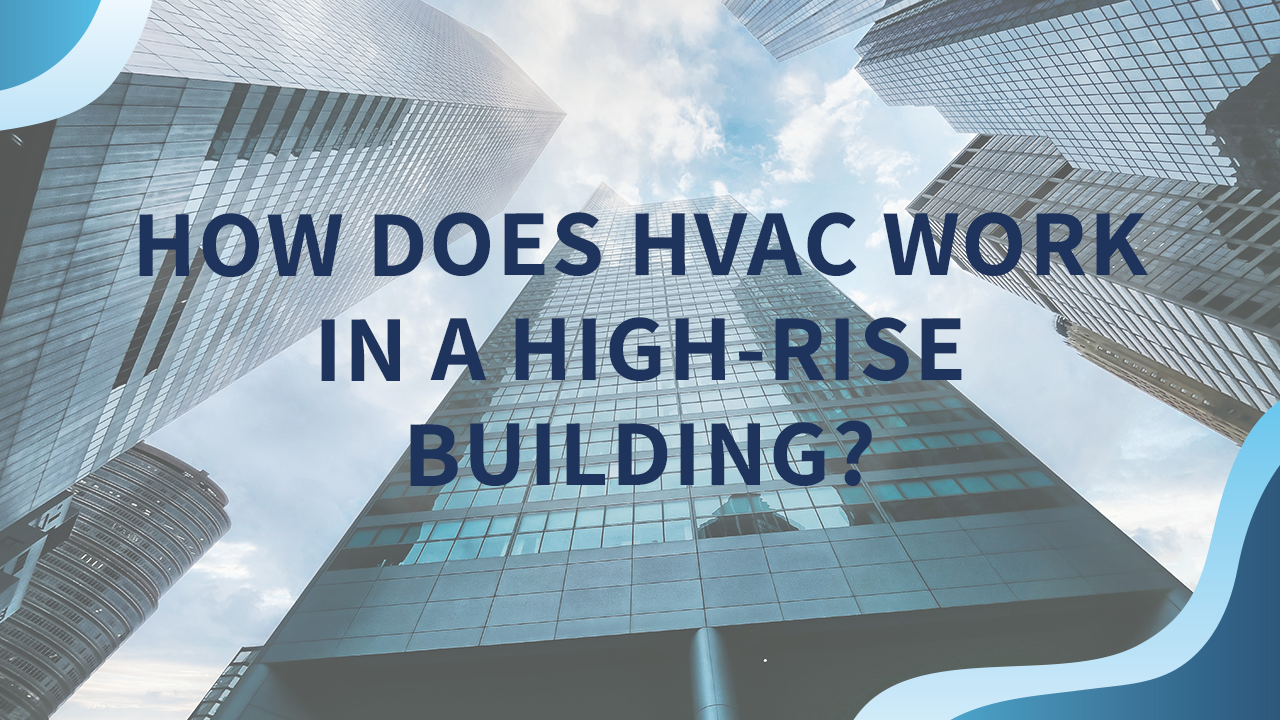High-rise buildings, serving various purposes such as residential, commercial, or mixed-use spaces, necessitate specialized HVAC systems to maintain optimal indoor environments. The key to understanding these complex structures is “how does HVAC work in a high-rise building?”
This article delves into the intricacies of HVAC systems tailored for towering edifices, exploring the unique challenges they present, including temperature control, air circulation, and humidity management. It also sheds light on the technological innovations shaping the future of HVAC in high-rise buildings, emphasizing energy efficiency, advanced control systems, and the significant role of zoning in enhancing system performance.


Heating, Ventilation, and Air Conditioning systems are integral to the real estate industry, providing essential climate control and air quality management.
In the context of high-rise buildings—structures that often serve as residential, commercial, or mixed-use spaces—the role of HVAC systems becomes even more critical.
These towering edifices present unique challenges that standard HVAC systems may not be equipped to handle.
Keep reading as we explore the intricacies of HVAC systems in high-rise buildings, from the challenges they face to the technological innovations that are shaping the future of this field.
Challenges of HVAC in High-Rise Buildings
High-rise buildings pose a set of unique challenges for HVAC systems, ranging from temperature control to air circulation and humidity management.
Understanding the following challenges is the first step in designing an effective HVAC system for such complex structures.
- Temperature Control – Managing temperature in a high-rise building is a complex undertaking due to varying microclimates on different floors.
- Air Circulation – Ensuring proper air circulation is crucial for maintaining indoor air quality, a logistical challenge in large, multi-story buildings.
- Humidity Management – Achieving the right balance of humidity is crucial for both health and comfort, a complex task given the varying conditions on different floors.
- Air Pressure and Temperature Variations – The vertical scale of high-rise buildings introduces unique challenges related to air pressure and temperature variations.
Components of HVAC Systems in High-Rise Buildings
The HVAC system in a high-rise building is more complex than those in smaller structures, as might be expected.
High-rise HVAC comprises several core components, each serving a specific function yet working in tandem to ensure a comfortable indoor environment. Some of the most common components of HVAC in high-rise buildings include:
- Heating – Centralized heating systems like boilers or heat pumps distribute warm air or hot water throughout the structure.
- Ventilation – Sophisticated air handling units equipped with filters and sensors manage the exchange of indoor and outdoor air.
- Air Conditioning – Chiller systems or variable refrigerant flow systems are often employed to cool multiple floors efficiently.
- Advanced Control Systems – These important systems oversee the integration of heating, ventilation, and air conditioning, adjusting each component’s operation in real-time.


Zoning and Energy Efficiency in High-Rise HVAC Buildings
Zoning allows for precise climate control in different areas, a feature that is particularly beneficial in tall structures with varying temperature and humidity needs across floors or units. This customization not only enhances occupant comfort but also contributes to system efficiency.
The relationship between zoning and energy efficiency becomes even more evident when considering how targeted climate control can reduce energy consumption.
By allowing for individualized settings, zoning systems enable the HVAC equipment to operate only where needed, avoiding the wasteful heating or cooling of unoccupied or less frequented areas. This targeted approach is a cornerstone of energy-efficient HVAC design.
Designed to minimize waste, these systems offer both economic and environmental benefits, reducing operational costs and lessening environmental impact. A synergy between zoning and energy efficiency is not just beneficial but essential for the optimal performance of HVAC systems in high-rise buildings.
Technological Innovations in High-Rise HVAC
The HVAC industry has seen remarkable technological advancements, especially in the design and operation of systems for high-rise buildings.
The following innovations not only enhance high-rise HVAC performance but also contribute to energy efficiency and sustainability:
- Smart Thermostats – Smart thermostats allow for remote control and monitoring of temperature settings, adapting to behavioral patterns for optimized energy usage.
- Variable Refrigerant Flow Systems – VRF systems offer precise control over the amount of refrigerant flowing to multiple evaporators, enabling individualized temperature settings for different zones.
- Building Automation Systems – These systems integrate various building services, including HVAC, to provide centralized control, thereby improving efficiency and ease of management.
- Air Purification Technologies – Advanced filtration and purification systems improve indoor air quality by removing pollutants and pathogens.
- Energy Recovery Ventilators – These devices capture waste energy from exhaust air to pre-condition incoming fresh air, improving energy efficiency.


Maintenance and Monitoring High-Rise HVAC Systems
Regular maintenance and advanced monitoring techniques are vital for the longevity and efficiency of HVAC systems in high-rise buildings.
By taking the proper measures, however, high-rise property owners and managers not only ensure optimal performance but also help in preempting issues before they escalate:
Regular preventative maintenance, including scheduled inspections and timely repairs, is crucial for the long-term efficiency and reliability of HVAC systems.
Likewise, remote monitoring and predictive maintenance options like Motili’s can help maximize HVAC performance in a high-rise building. This technology comes equipped with sensors and software that facilitate remote monitoring.
Predictive maintenance algorithms can identify potential issues before they become critical problems, enabling timely intervention.
Benefits of Effective HVAC Systems in High-Rise Buildings
An effective HVAC system in a high-rise building serves as a multifaceted asset, offering benefits that extend beyond mere climate control.
From enhancing indoor air quality to boosting productivity, a well-designed HVAC system significantly impacts various aspects of building management and occupant well-being.
How does an effective HVAC system benefit not only the property itself, but everyone who occupies it? Consider the following diverse advantages:
- Improved Indoor Air Quality – Effective ventilation and air filtration contribute to better indoor air quality, reducing the risk of respiratory issues among occupants.
- Occupant Comfort – A well-designed HVAC system ensures a comfortable indoor environment, which is crucial for both residential and commercial buildings.
- Productivity – Studies have shown that comfortable indoor conditions can enhance productivity, making this an important consideration for office buildings.
- Cost Savings – Energy-efficient systems result in lower operational costs, offering long-term financial benefits.
- Environmental Impact: Energy-efficient and well-maintained systems have a lower carbon footprint, contributing to environmental sustainability.
Optimize Your High-Rise HVAC with Motili
Motili offers a range of products and services that align well with the unique requirements of HVAC systems in high-rise buildings. From advanced control systems to predictive maintenance solutions, Motili provides comprehensive options designed to enhance system efficiency, occupant comfort, and overall building management.












